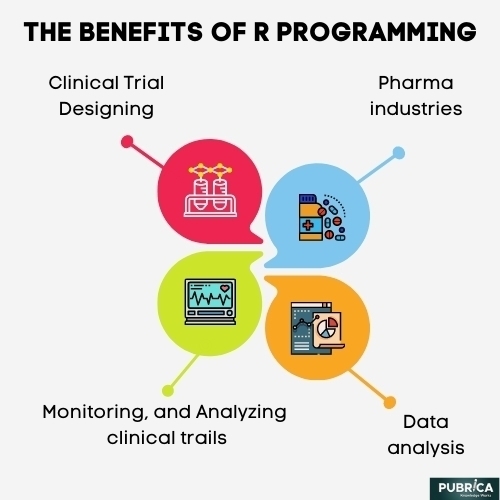
Four Strategies to Improve Clinical Trial Quality in Digital Era
January 18, 2021
Significant advancement of home diagnostics in the clinical trial
January 23, 2021In Brief:
- Medical Writing is an important part of health practice and our team of specialist medical writers offers the best quality and science standards with reliable, timely, and cost-effective clinical and regulatory materials.
- By becoming sensitive and versatile to your needs, our medical writers become an extension of your team, leveraging our experience to turn your nuanced and diverse data into a reliable and evidence-based account of your drug’s clinical profile in relation to care and patient safety.
- We have a wide variety of expertise and experience from the pharmaceutical industry, organizations for health research, and academics. Thorough scientific, mathematical, editorial and quality management assessments are carried out on all documents produced.
- Medical writing services include medicinal and regulatory Writing, scientific correspondence, materials for instruction and medical writing consulting services.
Introduction:
Despite its recent development over the past several years, the use of R programming in medical writing solutions has not been the most widespread and apparent, its realistic use still seems to be impeded by multiple variables, often due to misunderstandings (e.g. validation) but also due to a lack of knowledge of its capabilities. However, R is unquestionably building its own niche in the pharmaceutical industry (larger by the day) among these bottlenecks.
Benefits of R programming in clinical trial data analysis:
In recent years, data science has fueled powerful business decisions taken by industry leaders. Data scientists are tellers of stories. They often need to dig into data, clean, transform, create & validate models, understand patterns, generate insights and, most importantly, effectively communicate results in regulatory writing services. In addition to SAS, the most frequently spoken languages in statistics, analytics and visualization are R and Python. This article highlights R challenges observed, suggested approaches for risk assessment of R packages, Clinical Trial Data Analysis mitigation & implementation.
Current Trends of R in Pharma:
Looking at current market trends, R utilization at this juncture is less than 10% in activities related to Medical Writing Companies and Pharma Regulatory Submissions. R is, however, commonly used in programs in public health, healthcare economics, and exploratory/scientific research, detection of patterns, Plots/Graphs generation, basic Stat analysis and machine learning. For CDISC (SDTM, ADaM) datasets creation, R is not commonly used. “One of the programming community’s common questions is, “Will we replace SAS with R or use both or other languages (Python)?”. Instead of deciding between SAS or R or Python, I believe that one can make most of these programming languages to solve acceptable data science issues (one size does not fit all).
Reasons why R can be a potentially powerful tool for Data Analysis:
R is a statistical computing and graphics language and environment. Under the terms of the GNU General Public License of the Free Software Foundation in source code form, it is available as Free Software. As an open-source program, R enjoys tremendous community support. Availability of source code offers superior & detailed documentation.
R compiles and operates on a wide range of UNIX, Windows and macOS architectures and related systems (including FreeBSD and Linux). R is strongly extensible and offers a broad range of mathematical (linear and nonlinear simulation, classical statistical experiments, study of time series, grouping, clustering) and graphical techniques. The ease, with which well-designed publication-quality plots can be generated, including mathematical symbols and formulae where appropriate, is one of R’s strengths.

R Packages for Clinical Trial Design, Monitoring, and Analysis:
R has many packages for medical writing Clinical Trial data analysis. Following are few examples: A table (Create Tables for Reporting Clinical Trials), compare OEM (Comparison of medical forms in CDISC ODM format), CRTSize (Sample size estimation in a cluster (group) randomized trials), Blockrand (creates randomizations for block random clinical trials), DoseFinding (Supports design & analysis of dose-finding experiments), Pact (Predictive Analysis of Clinical Trials), SASxport (Read and Write ‘SAS’ ‘XPORT’ Files), ADCT (Adaptive Design in Clinical Trials), ClinPK, cpk (Clinical Pharmacokinetics Toolkit), randomizeR (Randomization for Clinical Trials), Base R (lot of functionality useful for design and analysis of clinical trials), Greport (Graphical Reporting for Clinical Trials), Coronavirus (Provides a daily summary of the Coronavirus (COVID-19) cases by state/province) etc.
R Implementation in Pharma – Real-time examples:
Amgen integrates SAS & R using Microsoft DeployR: Although SAS was the primary tool at Amgen, R was regarded because of the lack of SAS graph macros (ggplot). As the SAS Grid & R environment was housed at Amgen on various physical servers, integration was required and Microsoft DeployR was therefore selected. DeployR is a technology for integrating into web, desktop, tablet, and dashboard systems for delivering R analytics. SAS Procedure PROC Groovy allows Groovy code to be run on Java Virtual Machine via SAS Code (JVM). PROC GROOVY is used in this approach to invoke the Java code that is called DeployR Java Client Library.
Challenges & Validation of R:
R is free but it’s an investment. The main challenge of using R is ensuring validation documentation. R needs to be programmed (How do we develop software for Clinical science – that enables collaboration across the enterprise and the industry). R has too many Packages (Which packages are validated?). R Packages may come from anywhere & be written by anyone or may not follow a typical SDLC (Software Development Life Cycle).
Conclusion:
In pharmaceutical firms, medical writing agencies, and contract research organizations (CROs), R’s acceptance as the program of choice is something that many doubted to see over their lifetime. Still, things are progressing quickly, even in the pharmaceutical industry. Nonetheless, there are also many misconceptions regarding R, not least if it is a method appropriate for producing deliverables such as submission-ready TLFs. In this blog, we have seen that R can be an extremely powerful tool to create Tables and Listings using the officer and flextable packages and tools already available (and for great figures ggplot2 is available), and that by leveraging its high flexibility it is possible to obtain high- quality results with comparable efficiency and quality to standard SAS code.
References:
- The R Project for Statistical Computing can be found at www.r-project.org
- A detailed list of R packages for Clinical Trial design, monitoring and analysis can be found at cran.r-project.org
- Guidance for the use of R in Regulated Clinical Trial Environment and R’s SDLC process www.r-project.org
